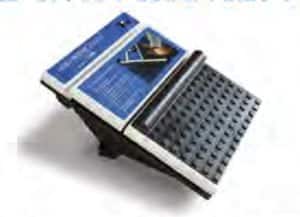 Chronically low blood pressure leads to decreased brain function and can increase the risk of developing dementia.
Chronically low blood pressure leads to decreased brain function and can increase the risk of developing dementia.
As we get into our 60s, our blood pressure, in particular our diastolic pressure (the lower number in your blood pressure
reading), starts to decline. This decline can lead to a condition called hypotension – when blood pressure gets too low to support blood flow to the brain when we are sitting or standing. Symptoms of hypotension include dizziness, blurry vision, nausea, fainting, and most importantly, cognitive impairment.
The most common reason for declining blood pressure is that our legs muscles weaken as we age. When we are sitting or standing, gravity is pulling our blood down into the veins of our legs. This is often first noticed as swollen feet and ankles, or the development of varicose veins or nighttime leg cramps. The heart can only maintain normal blood pressure if it gets sufficient blood pumped back from the lower body.
Specialized muscles in the calves of our legs, called the soleus muscles, serve this pumping role. While we are sitting or standing, the soleus muscles slowly fill with blood, and once they are filled, they slowly contract to push this blood back up to the heart. The motion of the soleus muscles is so slow that very few people can even feel these muscles contracting. However, these muscles are so important they are referred to as our secondary hearts. Unfortunately, if we primarily sit all day long, and the average American sits for about 10 hours a day, then the soleus muscles lose their ability to pump blood back up to the heart and our blood pressure drops.
Having low blood pressure over an extended time period can damage the brain. The brain needs oxygen flow to function normally, and oxygen is carried to all the tissues of our body by circulating blood. As the brain is at the top of the body, a normal blood pressure is necessary to ensure sufficient blood flow to the brain tissues, and even small decreases in blood pressure can lead to insufficient flow to the brain, disrupting brain function.
Recent research has demonstrated that below normal blood pressure significantly affects the ability of older individuals to complete common tasks such as remembering facts, reading, planning, and handling distractions. Individuals who have a resting diastolic blood pressure below 70 mmHg (which is typical for more than two-thirds of independently living older adults) require much more time to complete cognitive tasks and tend to make many more mistakes.
Perhaps of greater concern, long-term low blood pressure is linked to increased risk of dementia. In long-term studies where individuals are followed for up to 20 years, low blood pressure was found to be associated with a 5-10 fold increase in the likelihood of developing some form of dementia, and a doubling of the risk of developing Alzheimer’s Disease.
Fortunately, like any muscle, the soleus muscles can be trained back up if they become weakened. The soleus muscles are deep postural muscles (like the neck muscles) and so the best way to train them is with long duration, low-level, exercise. Standing on your toes, for example, is a good way to train up the soleus muscles and exercises such as Tai Chi and Yoga are also excellent. Similarly, heel lifts, done while you are sitting, utilizes the soleus muscles. Though more difficult, squatting, instead of sitting, is perhaps the best way to train up the soleus muscles, and the primary way our ancestors were able to maintain soleus muscle function throughout life.
The challenge with such exercises is that they have to be performed for at least one hour a day, and preferably for two or more hours over the course of the day, and this does not fit into many peoples’ lifestyle. To assist in achieving the long duration activation required to retrain the soleus muscles, a number of devices have been introduced to the market. One of these is the HeartPartner, a passive exercise device developed by Sonostics.
HeartPartner relies on a natural reflex response to activate the soleus muscles. You only need to place the front of your feet on the device, and a low-level vibration stimulates sensory nerves on the bottom of your feet, leading to soleus muscle contraction. You may wear your socks and shoes when using this device, and as it takes no conscious effort, you can continue to read, work on a computer, talk on the phone, watch television, or perform any other daily sitting activity while exercising your soleus muscles.
The crucial point is that if you know you have low blood pressure (diastolic pressure below 70) or you have symptoms of fluid pooling into your feet and legs (swollen feet and ankles, night-time leg cramps, varicose veins), then you should consider getting your soleus muscles trained back up. Otherwise, the reduced circulation will affect your brain performance, and possibly lead to dementia. The ancient saying, “health begins in your feet,” is perhaps nowhere more accurate than in maintaining heart and brain health.
Dr. Kenneth J. McLeod, Ph.D., is President and Chief Executive Officer at Sonostics, developer of the HeartPartner. He also serves as Director of the Clinical Science and Engineering Research Center at Binghamton University in New York. Dr. McLeod received his Ph.D degrees in Bio-medical Engineering from the Massachusetts Institute of Technology.
To learn more about HeartPartner please visit www.sonostics.com or call us
Toll Free at 1-855-696-9283.







